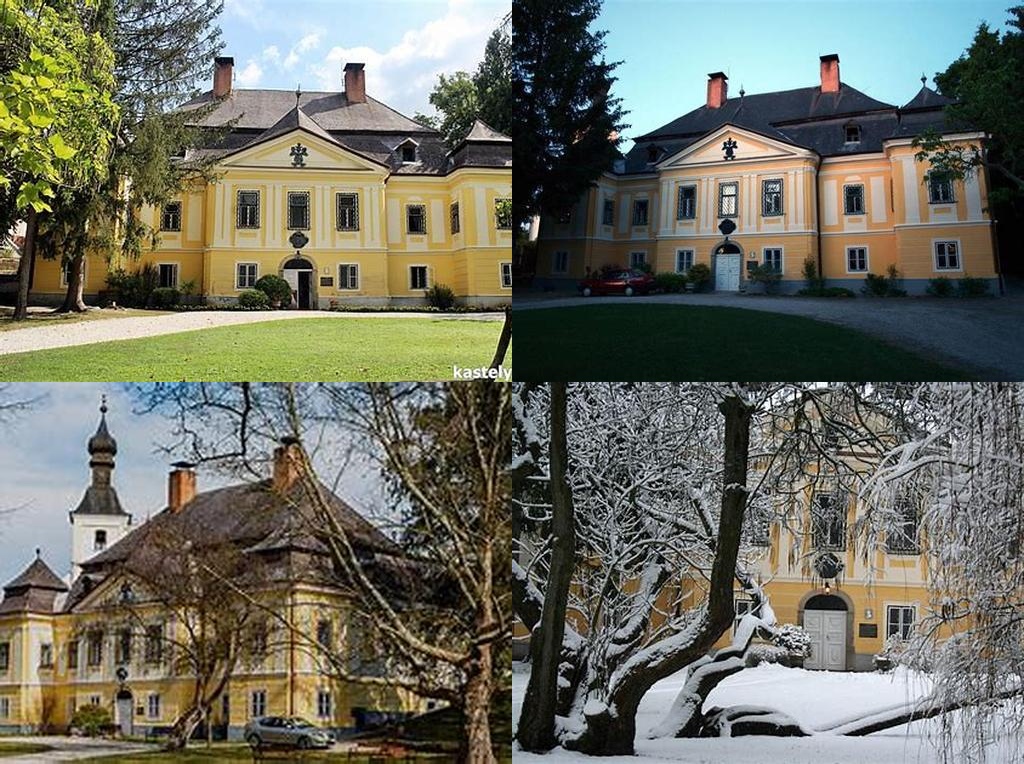
Bánhorváti is one of those Hungarian villages with a gentle, almost nostalgic whisper of the past everywhere you turn. While it’s easy to lose yourself in its natural beauty, the real gem that continually brings curious travelers back is the enchanting Platthy-kastély, or Platthy Castle, nestled serenely on the edge of a forest, as if watching over Bánhorváti and its stories. Walking up its carriage path, shaded by ancient trees, you’ll feel like you’re stepping out of the present and into a world shaped by centuries of noble ambition, artistic taste, and quiet rural life.
The tale of Platthy Castle begins in the late 18th century, when the Platthy family—an old Hungarian noble lineage—commissioned the construction of an elegant, yet understated, classical mansion. The castle isn’t the sort of intimidating fortress with towering stone walls and imposing battlements. Rather, it possesses a softer, country manor charm, with its whitewashed façade, pillared portico, and rows of large windows that let sunlight spill into generous rooms. This elegance wasn’t by accident, but the result of a carefully-balanced design that merges aristocratic comfort with the rolling, green landscapes of northern Hungary. Visitors often describe the place as having “lived-in grandeur”—not frozen in time, but echoing with the footsteps and voices of the people who’ve called it home.
Through its two-and-a-half centuries of history, Platthy-kastély has seen significant transformations, reflecting the shifting fortunes of Hungary itself. The centuries have left their marks: as regimes changed and wars swept across Europe, the castle adapted, sometimes serving as a noble residence, at other points housing military staff or accommodating state offices during the socialist era. Yet, despite moments of upheaval, the castle survived, maintaining its identity and character. If you visit, pay special attention to the nuances in its interior—subtle details, like a time-worn wooden banister or delicate ceiling frescos, whisper of a grandeur fading gently into rural tranquility.
One of the most delightful—though perhaps lesser-known—aspects of visiting Platthy Castle is wandering through its park. Surrounded by centuries-old chestnut and linden trees, the landscape offers a peaceful respite, especially in the golden hours of early morning or late afternoon. There’s a small lake reflecting the castle’s long silhouette, and winding paths perfect for thoughtful walks. In the 19th century, this park was carefully tended by the Platthy family, who took immense pride in cultivating rare species and arranging horticultural surprises for their guests. Today, it still feels like a secret garden waiting to be discovered, full of sunlight and birdsong.
The castle is often associated with one particularly fascinating figure, Lajos Platthy—a descendent of the original builders, and a celebrated Hungarian equestrian who brought home a bronze medal from the 1936 Berlin Olympics. His story is bound to the castle’s legacy, with family memorabilia on display inside, giving visitors a window into both the sporting history of Hungary and the shifting tides of fortune for noble families in the 20th century. Walking through rooms once belonging to such people, you get a sense that history here isn’t just in books; it still lingers in the air, in the sunlit halls and shadowed corners.
What makes Platthy-kastély stand out from other castles and mansions scattered across Hungary is not just the architecture or gardens, impressive as they are, but its atmosphere. This is not a museum of velvet ropes and “do not touch” signs. Where many grand estates feel removed, the castle in Bánhorváti welcomes exploration. It’s a place for inquisitive travelers with an appreciation for the quieter stories—the kind spun by family portraits in the drawing room, the scent of rain on stone, and the intricate interplay between culture and countryside.
Exploring its network of rooms, you might notice collections of antique furniture, precious old books, and even handwritten letters. Sometimes you’ll hear about recent restoration efforts: local historians and craftspeople working to preserve not only the walls and ceilings, but the stories nestled inside. The castle’s caretakers are always happy to talk, sharing legends and anecdotes that rarely make it into the guidebooks.
Outside, Bánhorváti itself offers plenty for those with a taste for small-town charm. The hills surrounding the castle are laced with hiking trails perfect for a day’s exploration. Friendly local cafés await along the main street, and the neighboring countryside offers a window into rural Hungarian life. Yet, it’s the castle that continues to draw a gentle stream of visitors—students, artists, wandering historians, and those simply seeking the quiet thrill of discovering a place where past and present meet.
For anyone craving a different perspective on Hungarian history—one far from the well-trodden paths of Budapest and the Balaton lakeshore—a visit to Platthy-kastély at Bánhorváti promises hours of wandering, wondering, and, maybe, just a touch of old-world magic.





